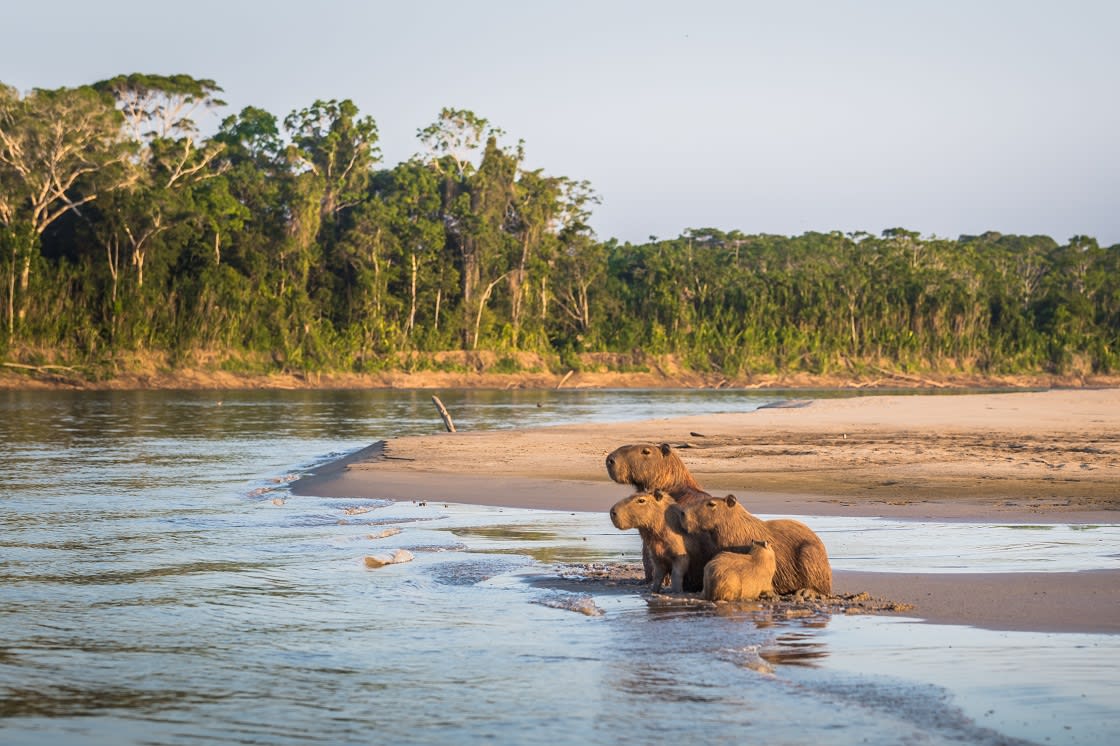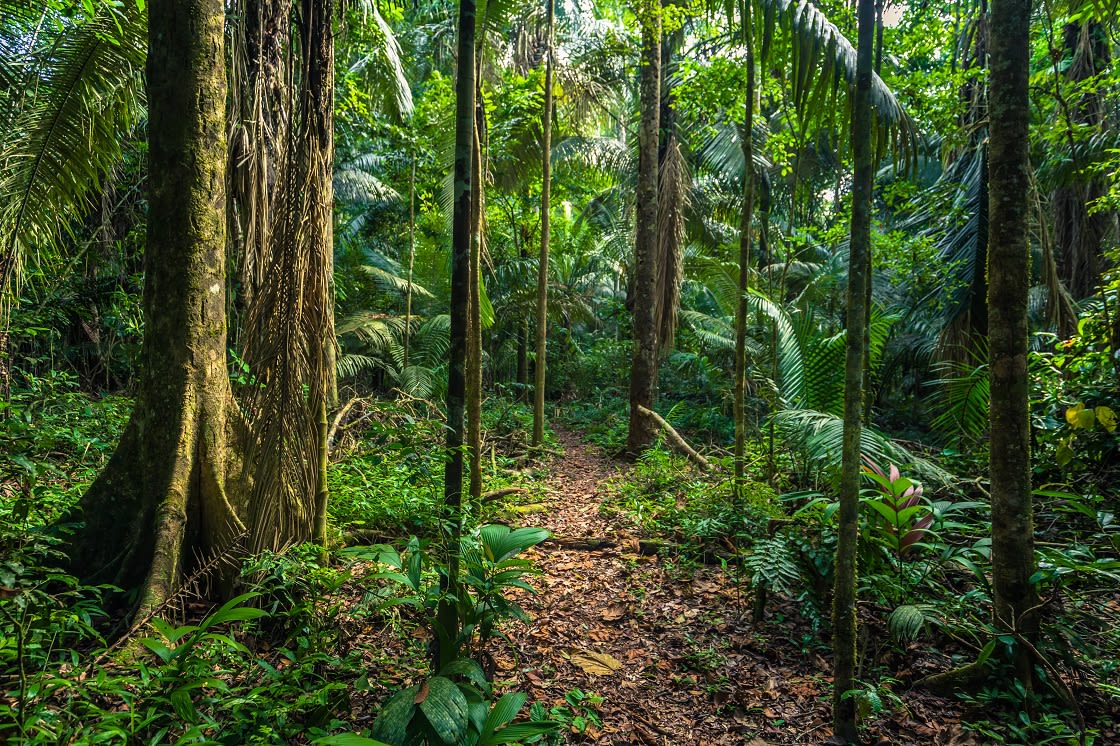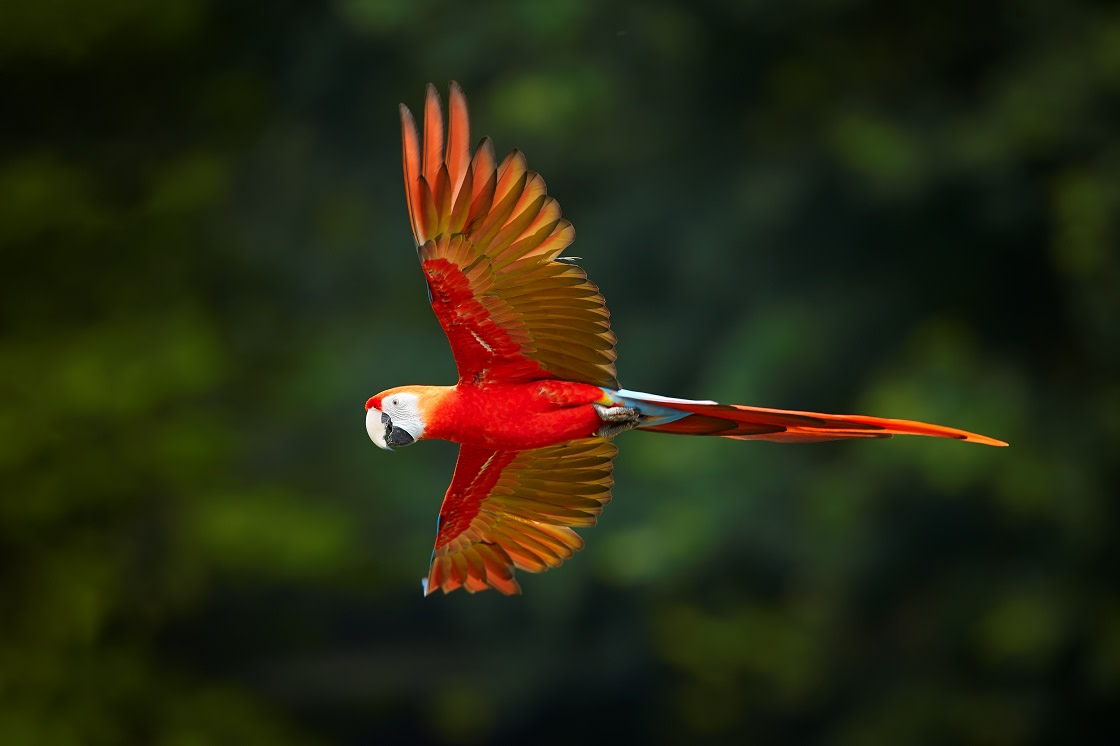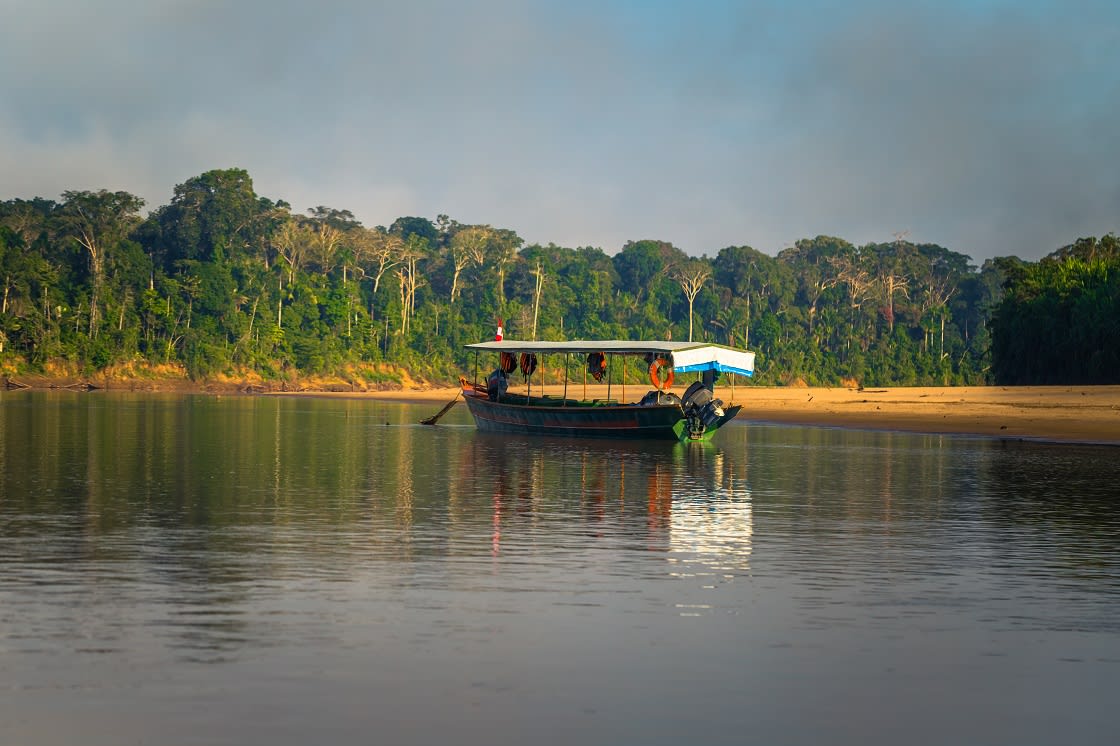
Manu National Park is one of the largest protected areas in the world, containing much of the Peruvian Amazon’s greatest flora and fauna. Almost 25,000 rare and endemic species reside here, with its inaccessibility playing a crucial role in preserving Manu before it was declared a Peruvian National Park, UNESCO World Heritage Site and UNESCO Biosphere Reserve.
Now, adventurous travelers seeking the lush, untouched Amazon can explore here with a guide and permit, spotting exotic birds, a variety of rainforest-dwelling monkeys, and hopefully a mix of other rare mammals. Here is everything travelers need to know about the remarkable Manu National Park in Peru and why it should be at the top of your travel list.

Family Of Capybara On The River Shore
The largest national park in Peru, Manu covers an impressive area of 15,328 square kilometers, with an additional 914 square kilometers included in a “Cultural Zone”. This includes the entire watershed of the Manú River, all the way from its tributaries in the Andes to where it empties into the Madre de Dios River.
This resulting total of protected area is a shocking 18,811 square kilometers containing several ecological zones, and such a breadth of species that Manu is regarded as having one of the highest levels of biodiversity of any park in the world. Permanent human habitation within Manu National Park borders is restricted to several small Matsigenga tribal communities, though parts of the broader Manu Biosphere Reserve include a few designated areas for controlled tourism and harvesting.
Travelers and researchers are only permitted to enter here with a guide and permit. Beyond that, the only other visitors allowed in Manu National Park include medical and educational professionals that have been invited by the indigenous community.

The Amazon Rainforest In Manu National Park, Peru
With a range of ecological zones contained within the Manu National Park, the terrain varies from Amazon forests at 150 meters above sea level, to portions of Peruvian Yungas at middle elevations, to the Central Andean wet grasslands at the highest elevations of 4,200 meters.
This variety leads to an incredible level of biodiversity, which includes more than 15,000 species of plants in all of Manu National Park (that’s 10% of the world’s vascular plant species!). As many as 250 varieties of trees have been found in a single hectare here, and potentially more remain waiting to be discovered.
With 40% of Manu classified as Amazonian lowland tropical rainforest, travelers can count on seeing Mauritia palm swamps, seasonal floodplain forests, and oxbow lakes (river bends that have been cut off from the rest of the flowing river). Dense foliage mixes with the open and vast grasslands (much easier for animal sightings), as colorful and unusual plants big and small dot the landscape. Many medicinal plants long used by native people can be found here, with a variety of uses that have enabled human habitation for centuries.

Scarlet Macaw Flying In The Reserve
Living within the thriving ecosystems of Manu are many species flying, fluttering, and climbing overhead. As the varied landscape offers a unique combination of flora, so does it provide a range of fauna to be witnessed. So far, this includes 222 species of mammals, 99 species of reptiles, 140 species of amphibians, 1,000 species of birds, 210 species of fish, and over 2,300 insects (not including the numerous species that remained unnamed).
Some of the most impressive of the rich and diverse wildlife of Manu National Park are the Peruvian jaguar, macaws, the puma, the ocelot, the giant otter, the giant anteater, the giant armadillo, the Brazilian tapir, a variety of sloths, marsh deer (especially unique as it is actually a savanna animal), and fourteen different species of monkeys.
Monkeys are one of the more common sights for visitors, known for playing in the trees and watching the activity below. Guests can also expect an array of birds and butterflies constantly swooping through the rainforest canopy, and sightings of several unique reptiles and insects are never far. Keep your eyes peeled for one of the rarer jungle mammals, and perhaps leave with the sighting of a lifetime.

Tour Boat In The Rainforest Of Manu National Park
Located in the Madre de Dios and Cusco regions of Peru, the nearest city to Manu National Park is Cusco. The center of the Inca Empire and home of Machu Picchu, Cusco is the most popular tourist destination in the country, thus making Manu National Park conveniently located for those wanting to see both the Amazon and Wonder of the World, Machu Picchu.
Manu National Park can be accessed by road from Cusco, though the only access to the lowlands is by boat up the Manu River. The bus from Cusco to Shintuya or Atalaya takes about 10-12 hours, then requires another 8 hours by boat to Boca Manu. From here, it’s another 8 hour journey to reach the entrance of the “reserved zone” of the National Park. This remote location is what has enabled it to remain so well preserved.
For those on a shorter timeframe, it is also possible to fly to Boca Manu from Cusco (or elsewhere in the country), and then all that remains is the 8-hour drive to the National Park Entrance. All-encompassing tours are recommended to make this journey as comfortable and easy as possible, with minimal time wasted traveling.
While Rainforest Cruises aim to provide accurate and up-to-date information, we make no representations as to the accuracy or completeness of any information herein or found by following any link on this site. Rainforest Cruises cannot and will not accept responsibility for any omissions or inaccuracies, or for any consequences arising therefrom, including any losses, injuries, or damages resulting from the display or use of this information.




